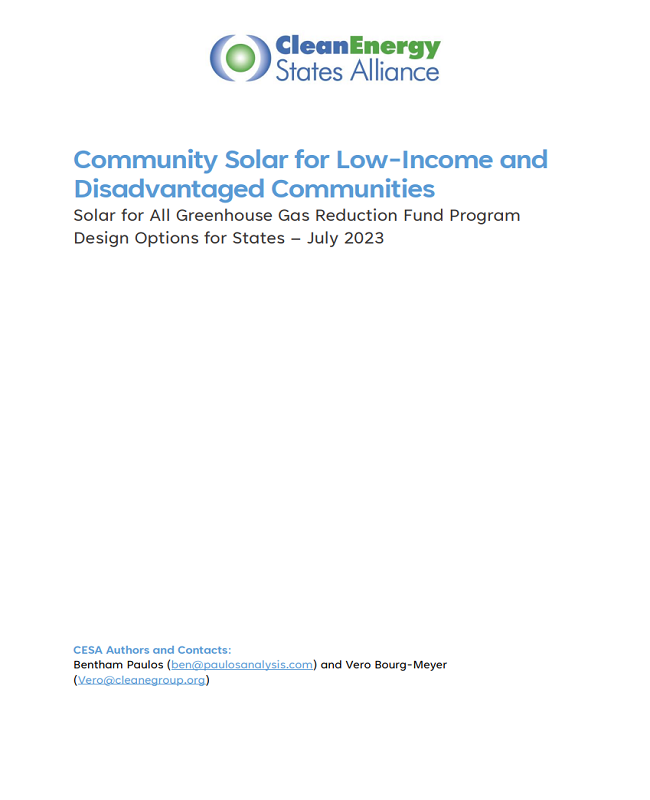This document offers insights into how states can design and launch community solar programs that benefit disadvantaged communities and low- and moderate-income (LMI) households using the $7 billion Greenhouse Gas Reduction Fund (GGRF) Solar for All competition (Solar for All) and take advantage of new tax credits features available under the Inflation Reduction Act.
There are many available models of community solar throughout the country, but not all will meet the goals of the Solar for All competition or score well under the GGRF’s criteria. To streamline design choices and simplify the Solar for All application process, this guide presents three community solar models, with a few variations, that states and territories could use to shape their applications. These are (a) a Subscription Model, (b) an Ownership Model (including via a cooperative), and (c) an Energy Assistance Model. The guide is a companion to CESA’s previous guidance on LMI single-family homes solar programs. While this resource was specifically designed for states, it will also be useful for tribes, municipalities, and other eligible recipients for the Solar for All Competition. Consult other available resources relevant to the Solar for All Competition here.
More About this Resource
Publisher: Clean Energy States Alliance
Date: July 28, 2023
Type: Report
Tags: Clean Energy, Inflation Reduction Act, Solar, State and Local Government, Underserved Communities
Sector(s): Other Climate
State(s): Nationwide
